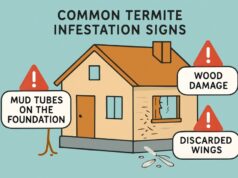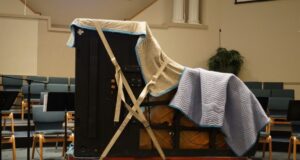OFHEO House Price Index Shows Smallest Quarterly Increase Since 1994
WASHINGTON, DC – U.S. home prices increased only slightly in the second quarter of 2007 according to the OFHEO House Price Index (HPI). The HPI, which is based on data from sales and refinance transactions, was 0.1 percent higher in the second quarter than in the first quarter of 2007. This is below the revised growth rate of 0.6 percent for the previous quarter and the lowest since the fourth quarter of 1994. Prices in the second quarter of 2007 were 3.2 percent higher than they were in the same quarter of 2006, the lowest annual price change since the 1996-97 period.
OFHEO’s purchase-only index, based solely on purchase price data, indicates less appreciation for U.S. houses over the past year than does the all transactions HPI. The purchase-only index increased 2.6 percent between the second quarter of 2006 and the second quarter of 2007, compared with 3.2 percent for the HPI. However, for the second quarter, the purchase-only index increase was slightly higher at 0.5 percent (seasonally-adjusted).
The figures were released today by OFHEO Director James B. Lockhart as part of OFHEO’s quarterly report analyzing housing price appreciation trends.
“House prices were basically flat in the second quarter despite tightening credit policies, rising foreclosure rates, and weakening buyer sentiment,” said Lockhart. “Significant price declines appear localized in areas with weak economies or where price increases were particularly dramatic during the housing boom.”
The data in this release only include price information through June. To the extent that recent mortgage market instability may have affected housing demand and prices, those effects would be evident in OFHEO’s next HPI release.
In the period covered in this report, house prices grew faster than did prices of nonhousing goods and services reflected in the Consumer Price Index. House prices rose 3.2 percent over the past year, while prices of other goods and services, excluding shelter, rose 2.1 percent.
“These newest data show price declines in many areas that were once at the center of the housing boom,” said OFHEO Chief Economist Patrick Lawler. “Nevertheless, in most states, prices held their ground or increased slightly.”
Significant HPI Findings:
Highest and Lowest Appreciation:
- 1. The West South Central and Mountain Census Divisions continue to have the strongest housing markets. Appreciation over the past four quarters was 6.3 percent for the West South Central Division (5.6% for the purchase-only index), which includes Texas, Oklahoma, Arkansas, and Louisiana. The appreciation in the Mountain Division was 6.1 percent (6.7% using the purchase-only metric).
- 2. The New England Census Division continues to have the most anemic house price appreciation. Prices grew 0.5 percent there between the second quarter of 2006 and the second quarter of 2007, more than one percentage point less than the second most sluggish Division (East North Central).
- 3. The states with the greatest appreciation between the second quarter of 2006 and the second quarter of 2007 were: Utah (15.3%), Wyoming (12.8%), Washington (9.1%), Montana (9.1%), and New Mexico (8.8%). The states with price declines for the same period were: Nevada (-1.5%), Michigan (-1.4%), California (-1.4%), Massachusetts (-1.0%), and Rhode Island (-1.0%).
- 4. The Metropolitan Statistical Areas (MSAs) with the greatest appreciation between the second quarter of 2006 and the second quarter of 2007 were: Wenatchee, Washington (23.5%), Provo-Orem, Utah (18.2%), and Salt Lake City, Utah (16.0%). The MSAs with the largest price declines for the same period were all in California: Merced, California (-8.7%), Santa Barbara-Santa Maria-Goleta, California (-8.1%), and Stockton, California (-7.2%).
Other Notable Results:
- 1.The state price declines over the past year in five states is the largest number of price declines since 1996-1997.
- 2. Of the 287 cities on OFHEO’s list of “ranked” MSAs, 226 had positive fourquarter appreciation and 61 had price declines.
- 3. Eighteen of the 20 cities having the lowest four-quarter appreciation rates were in Florida and California. Those cities experienced price declines of between 4.2 and 8.7 percent.
The complete list of state appreciation rates can be found on pages 18 and 19. The complete list of city (MSA) appreciation rates is available on pages 31-51.
Purchase-Only Index
An index using only purchase price data indicates less price appreciation for the U.S. over the latest four quarters, but more in the most recent quarter. The purchase-only index increased 2.6 percent between the second quarter of 2006 and the second quarter of 2007, compared with 3.2 percent for the HPI. The purchase-only index increased 0.5 percent (seasonally-adjusted) between the first quarter of 2007 and the second quarter of 2007, compared with 0.1 percent for the HPI. The difference between the two appreciation measures may reflect differences in the types of homes refinanced versus those purchased or changing biases in the appraisal valuations and different proportions of appraisal and sales price data. (For more information see page 8).
Highlights
This period’s HPI release includes an analysis of monthly house price indexes that are constructed using the same data and methodology that are used in calculating the standard quarterly index. The article, which can be found on pages 9-17, discusses some of the benefits and challenges associated with monthly measurements of price changes.
Background
OFHEO’s House Price Index is published on a quarterly basis and tracks average house price changes in repeat sales or refinancings of the same single-family properties. OFHEO’s index is based on analysis of data obtained from Fannie Mae and Freddie Mac from more than 33 million repeat transactions over the past 32 years. The more limited “purchase-only” index is based on 4.9 million transactions.
OFHEO analyzes the combined mortgage records of Fannie Mae and Freddie Mac, which form the nation’s largest database of conventional, conforming mortgage transactions. The conforming loan limit for mortgages purchased in 2006 and 2007 is $417,000.
This HPI report contains four tables: 1) A ranking of the 50 States and Washington, D.C. by House Price Appreciation; 2) Percentage Changes in House Price Appreciation by Census Division; 3) A ranking of 287 MSAs and Metropolitan Divisions by House Price Appreciation; and 4) A list of one-year and five-year house price appreciation rates for MSAs not ranked.
OFHEO’s full PDF of report is at: www.ofheo.gov/media/pdf/2q07hpi.pdf. Also, be sure to visit http://www.ofheo.gov/ to use the OFHEO House Price calculator. Please e-mail "> for a printed copy of the report. The next HPI report will be posted November 29, 2007.

















